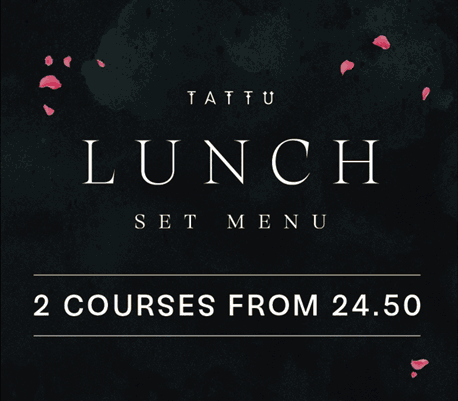The chef jacket stands as one of the most recognizable symbols in the culinary world, representing professionalism, tradition, and expertise. Far more than a simple uniform piece, the chef jacket embodies centuries of culinary heritage while serving essential practical functions in modern commercial kitchens.
Understanding the design, materials, and features that make exceptional chef jackets can significantly impact both comfort and performance in demanding kitchen environments.
The Rich History and Tradition of Chef Jackets
Origins in 19th Century France
The modern chef jacket traces its origins to the legendary French chef Marie-Antoine Carême in the early 1800s, later popularized by Auguste Escoffier. These culinary pioneers established the white double-breasted jacket as a symbol of cleanliness, professionalism, and kitchen hierarchy. The pristine white colour demonstrated the chef’s ability to maintain cleanliness even while working with messy ingredients.
Evolution of Design and Function



Originally, chef jackets served multiple purposes beyond appearance. The double-breasted design allowed chefs to quickly reverse the jacket if one side became soiled during service, maintaining a professional appearance. The high collar provided protection from heat and steam, while the long sleeves shielded arms from burns and cuts common in busy kitchens.
Cultural Significance and Professional Identity
Today’s chef jacket continues to represent professional identity and earned respect within the culinary community. The traditional white jacket symbolizes a chef’s commitment to cleanliness and attention to detail, qualities essential for food safety and culinary excellence.
Essential Features of Modern Chef Jackets
Fabric Technology and Performance
Modern chef jackets utilize advanced fabric technologies designed for the demanding kitchen environment. High-performance materials often feature moisture-wicking properties, stain resistance, and temperature regulation capabilities. Cotton-poly blends remain popular for their durability and comfort, while pure cotton options provide breathability and traditional feel.
Construction Details and Durability
Quality construction distinguishes professional-grade chef jackets from basic alternatives. Reinforced seams, secure button attachments, and quality stitching ensure garments withstand the rigors of commercial kitchen use. Double-needle stitching at stress points prevents premature wear and maintains professional appearance through countless wash cycles.
Comfort and Mobility Features
Professional chefs spend long hours in constant motion, making comfort and mobility crucial considerations. Modern designs incorporate features like underarm gussets for improved range of motion, ergonomic seaming, and strategic ventilation panels that enhance comfort during extended kitchen shifts.
Choosing the Right Chef Jacket for Your Needs


Understanding Fit and Sizing
Proper fit balances professional appearance with functional comfort. Chef jackets should allow for comfortable movement without being baggy or restrictive. Consider the layering requirements of your kitchen environment, as some chefs prefer roomier fits to accommodate undershirts or thermal layers.
Material Considerations for Different Environments
Different kitchen environments require specific material properties. Fine dining establishments often prioritize traditional cotton fabrics for their professional appearance and comfort. High-volume commercial kitchens may benefit from synthetic blends offering superior stain resistance and easy care properties. Professional Chef jackets are available in various fabric options designed to meet specific operational requirements.
Colour Options Beyond Traditional White
While white remains the classic choice, modern kitchens increasingly embrace coloured chef jackets for practical and aesthetic reasons. Black jackets hide stains effectively, while coloured options can reflect restaurant branding or kitchen hierarchy. Some establishments use different colours to distinguish various kitchen roles or departments.
Care and Maintenance Best Practices
Proper Washing Techniques
Maintaining chef jackets requires specific care to preserve appearance and extend lifespan. Pre-treat stains immediately when possible, using appropriate stain removers for different types of spills. Wash in hot water with commercial-grade detergents designed for food service uniforms to ensure proper sanitization.
Stain Prevention and Treatment
Understanding common kitchen stains helps prevent permanent damage to chef jackets. Oil-based stains require different treatment than protein or acidic stains. Immediate attention to spills significantly improves stain removal success rates and maintains professional appearance.
Professional Laundering Services
Many establishments utilize professional uniform cleaning services that specialize in food service apparel. These services understand the specific requirements of chef uniforms and use commercial-grade equipment and cleaning agents to maintain hygiene standards while preserving garment integrity.
Professional Standards and Kitchen Hierarchy
Role-Based Jacket Variations
Traditional kitchen hierarchy often reflects in chef jacket styles and colours. Executive chefs might wear pristine white double-breasted jackets, while line cooks wear single-breasted styles. Some establishments use coloured jackets or specific design elements to indicate roles and experience levels.
Health and Safety Compliance
Chef jackets play important roles in kitchen safety compliance. Long sleeves protect against burns and cuts, while proper fit prevents loose fabric from creating safety hazards around equipment. Some regulations specify minimum fabric weights or flame-resistant properties for commercial kitchen uniforms.
Maintaining Professional Standards
Consistent uniform standards contribute to overall kitchen professionalism and team cohesion. Establishing clear guidelines for chef jacket care, replacement schedules, and appearance standards helps maintain consistent professional image while supporting food safety requirements.
Modern Innovations and Trends

Performance Fabric Technologies
Contemporary chef jacket manufacturers incorporate advanced textile technologies previously reserved for athletic wear. Moisture-wicking fibres, antimicrobial treatments, and temperature-regulating materials enhance comfort during long, demanding shifts in hot kitchen environments.
Sustainable and Eco-Friendly Options
Environmental consciousness drives demand for sustainable uniform options. Manufacturers increasingly offer chef jackets made from recycled materials, organic cotton, or fabrics produced through environmentally responsible processes without compromising performance or durability.
Customization and Personalization
Modern chef jackets offer extensive customization options including embroidered names, restaurant logos, and specialized design elements. These personalizations enhance professional identity while supporting restaurant branding and team unity.
Frequently Asked Questions
How often should chef jackets be replaced?
Professional chef jackets typically last 6-12 months with regular use, depending on kitchen environment and care quality. Replace jackets when stains become permanent, fabric shows significant wear, or professional appearance can no longer be maintained through regular cleaning.
What’s the difference between single and double-breasted chef jackets?
Double-breasted jackets offer the traditional reversible front for quick stain concealment and provide additional chest protection. Single-breasted styles offer a more modern, streamlined appearance and can be more comfortable in hot kitchen environments. Choice often depends on personal preference and kitchen dress code requirements.
Can chef jackets be tailored for better fit?
Yes, professional tailoring can improve chef jacket fit significantly. Common alterations include sleeve length adjustments, body tapering, and length modifications. However, ensure alterations don’t compromise safety features or professional appearance standards required by your establishment.
Are colored chef jackets as professional as white ones?
Coloured chef jackets are increasingly accepted in modern kitchens and can be highly professional when chosen appropriately. Black jackets are particularly popular for their stain-hiding properties, while other colours can reflect restaurant themes or branding. The key is maintaining consistent standards regardless of colour choice.
What features should I look for in a high-quality chef jacket?
Look for reinforced construction with double-needle stitching, quality buttons or snap closures, appropriate fabric weight for your environment, and proper ventilation features. Consider stain-resistant treatments, comfortable fit that allows full range of motion, and easy-care properties that maintain appearance through frequent washing.
Conclusion
The chef jacket represents far more than a simple uniform piece—it embodies culinary tradition, professional standards, and practical functionality essential for kitchen success. From its historical origins in 19th century French kitchens to today’s performance-enhanced designs, the chef jacket continues evolving while maintaining its core purpose of protecting and presenting culinary professionals. Choosing the right chef jacket involves balancing traditional elements with modern performance features, considering factors like fit, fabric technology, care requirements, and professional standards. Whether you’re a seasoned executive chef or culinary student beginning your journey, investing in quality chef jackets demonstrates commitment to professional excellence and ensures comfort during the demanding work of creating exceptional culinary experiences. The right chef jacket becomes an extension of your professional identity, supporting both performance and pride in the noble art of cooking.
Images courtesy of unsplash.com and pexels.com











